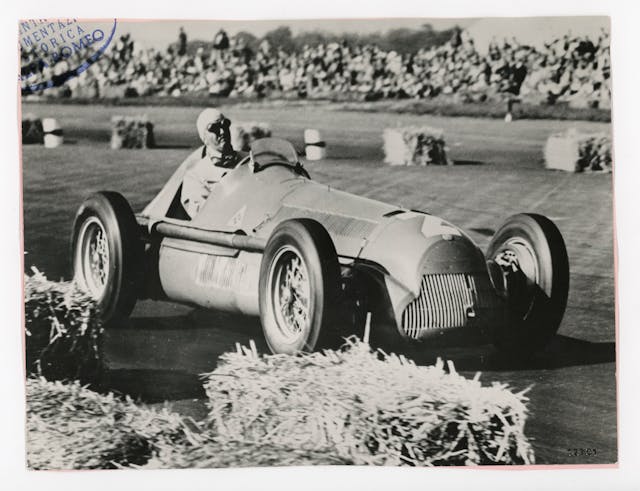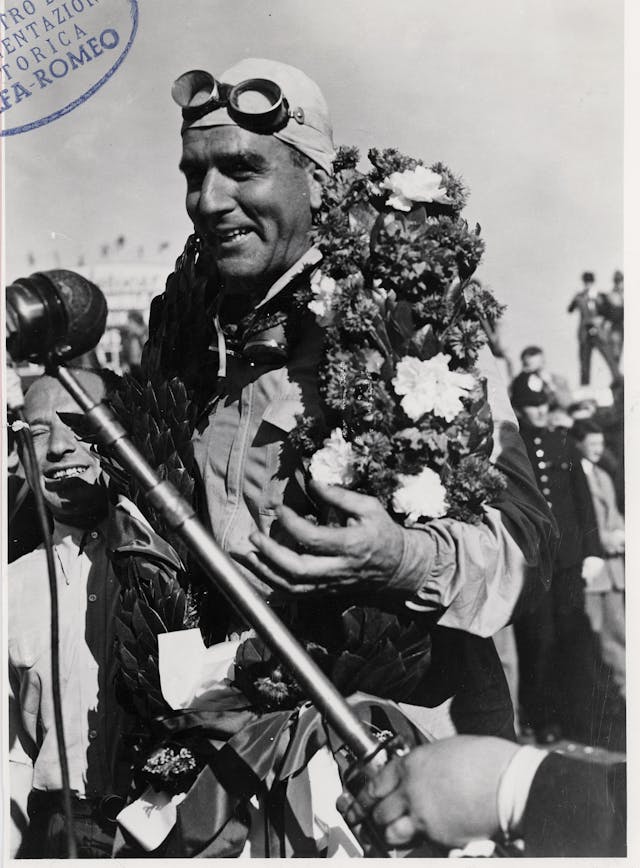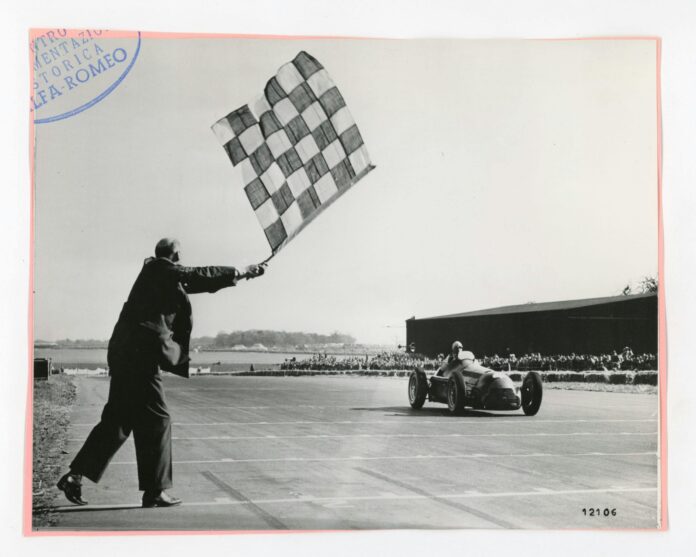Seventy-five years ago, the former World War II Royal Air Force base at Silverstone, in England’s Northamptonshire, hosted the British Grand Prix for the third time.
On a circuit marked out on the old runways and taxiways, with only hay bales and ropes as barriers, 21 racers faced off over 70 laps in the spring sunshine, much as they had for the previous two runnings of the event.
The 1950 race, (officially The Royal Automobile Club Grand Prix d’Europe Incorporating The British Grand Prix) however, would be the most significant, as it heralded the new era of Formula 1 and the first World Championship for Drivers.
The Formula 1 championship was a response, from the Fédération Internationale de l’Automobile (FIA), the sport’s governing body, to what the two-wheeled world had introduced a year earlier with the Motorcycle World Championships. This new World Championship would consist of six races in Europe, plus the Indianapolis 500, and the cars would stick to the “formula” that had defined top-flight motorsport since it had resumed after the war. Normally aspirated engines could be run up to 4.5 liters in capacity, while supercharged engines were capped at 1.5 liters.
For the inaugural race in the series, Italy dominated the grid, with six Alfa Romeos and six Maseratis lining up. France’s Talbot-Lago entered five cars, and the home nation was represented by four ERAs, in front of a crowd estimated to be 200,000 strong.
The 2.9-mile circuit ran clockwise, featuring five right-handers at Woodcote, Copse, Becketts, Stowe, and Club and just three left kinks—Maggots, Chapel, and Abbey. It was, as it still is today, one of the fastest circuits on the calendar, and Nino Farina clocked a time of 1:50.8 in qualifying to put his Alfa Romeo on pole at an average speed just shy of 95 mph. Farina was followed in close succession by Alfa teammates Luigi Fagioli, Juan Manuel Fangio, and Reg Parnell, with Prince Bira’s Maserati some 1.8 seconds off the pace.

The Alfa’s speed would remain unchecked in the race, with Farina holding the lead and being only briefly challenged by Fangio, who would then fall foul of a broken oil pipe. After 200 miles of racing, Farina led Fagioli by 2.6 seconds across the finish line. Parnell came in third almost a minute later. The Talbot-Lagos of Yves Giraud-Cabantous and Louis Rosier were two laps down, the ERAs of Bob Gerard and Cuth Harrison were three laps behind the winner, and the best-place Maserati of David Hampshire was a full six laps adrift of the lead.
It was a dominant display by Alfa Romeo, and the Italian outfit would go on to win every European round of the championship, with Farina and Fangio taking three victories each, and Farina being declared the very first Formula 1 World Champion.

Today, Silverstone looks very different. The circuit itself has been extended to 3.7 miles in length, with 18 turns and two DRS (drag reduction system) zones. The state-of-the-art facility is home to the Aston Martin team, with architect-designed pit and paddock buildings and even luxury trackside homes. Sir Lewis Hamilton’s lap record of 1:27.369, or 151.9 mph, is a mark of how much faster F1 has gotten over time.
Silverstone hasn’t had everything its way, however. From 1955 to 1962, it shared the British GP with Aintree, near Liverpool, and then between 1963 and 1986, the race was also hosted every other year with Brands Hatch in Kent.
As Silverstone celebrates 75 years of F1 over the Grand Prix weekend from July 4 to 6, the circuit will also be rejoicing in the fact that it will remain the home of the British Grand Prix until 2034. We wouldn’t bet against it hosting the centenary as well.
